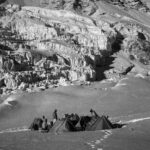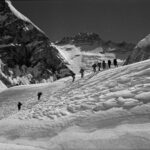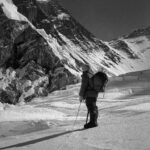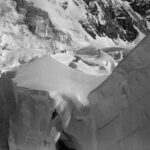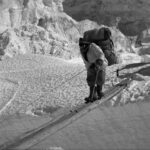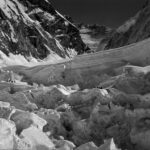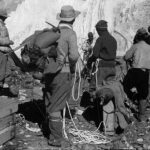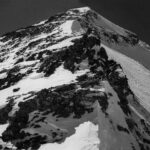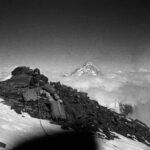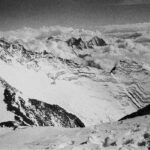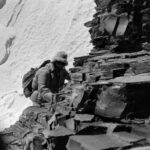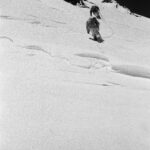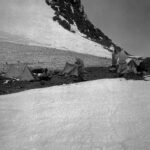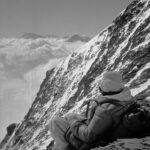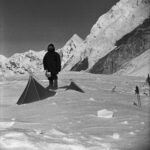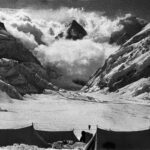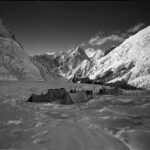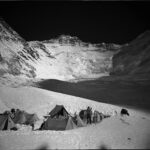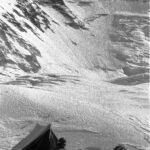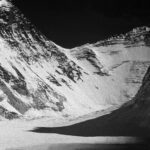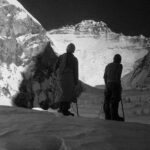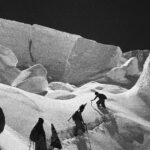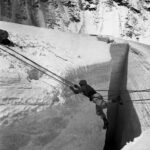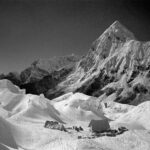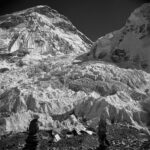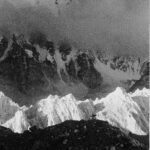Everest, autumn 1952
Excerpt from: Swiss Foundation for Alpine Research, 1939 to 1970. Published in Zurich in 1972
Participants: Dr. med. Gabriel Chevalley, doctor and expedition leader; Raymond Lambert, lead climber; Jean Buzio; Gustave Gross; Ernst Reiss; Arthur Spöhel; Norman G. Dyhrenfurth, cameraman.
Outcomes: Ascent of the south-west ridge of Everest, up to a height of 8100 metres. Exploration of the Lhotse glacier. Important meteorological results. Expedition film. Comprehensive photographic records.
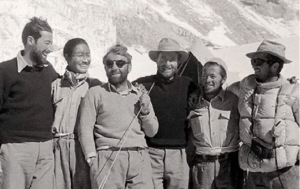
Approval had been granted for an additional ascent of Everest in the autumn, and the results of the spring expedition had led to new hope. Preparations were therefore made for an autumn expedition as soon as the participants had returned, in the middle of July. The intention was to have one last chance, since approval had already been granted to the British for the following year. It was intended that the new expedition should benefit directly from the experience gained previously. Only Dr. Gabriel Chevalley and Raymond Lambert were available from the past members. The former was appointed leader of the undertaking, while Lambert was appointed lead climber.
Two French-speaking Swiss men, Gustave Gross and Jean Buzio and two German-speaking Swiss men, Ernst Reiss and Arthur Spöhel were also chosen. Each of these men already had a glittering mountaineering career behind them, but no experience in the Himalayas. Time ran out before a sufficiently strong assault party could be assembled, so the gap would have to be filled by the best available Sherpas. This new team did not have the same inner cohesion as the first, nor its irresistible flair. The combination of the functions of expedition leader and doctor in the same person also proved to be less than perfect. The expedition was equipped in a record time of one month, though much more material had to be ordered because much lower temperatures were to be expected. They took new oxygen equipment and more oxygen cylinders with them.
This expedition was not blessed with particularly good luck from the very beginning. The influence of the first expedition was too powerful, although the conditions and circumstances were quite different. Nevertheless, further valuable experience was gathered. This included the proof that the Lhotse glacier was passable, and that it offered the opportunity to set camps. From a meteorological viewpoint, the expedition showed that an early-autumn period of fine weather lasting two to three months could be expected, which might present some advantages. However, the winds in the upper regions are so strong, and the temperatures so low, that these might well represent insurmountable obstacles to an ascent to the summit.

